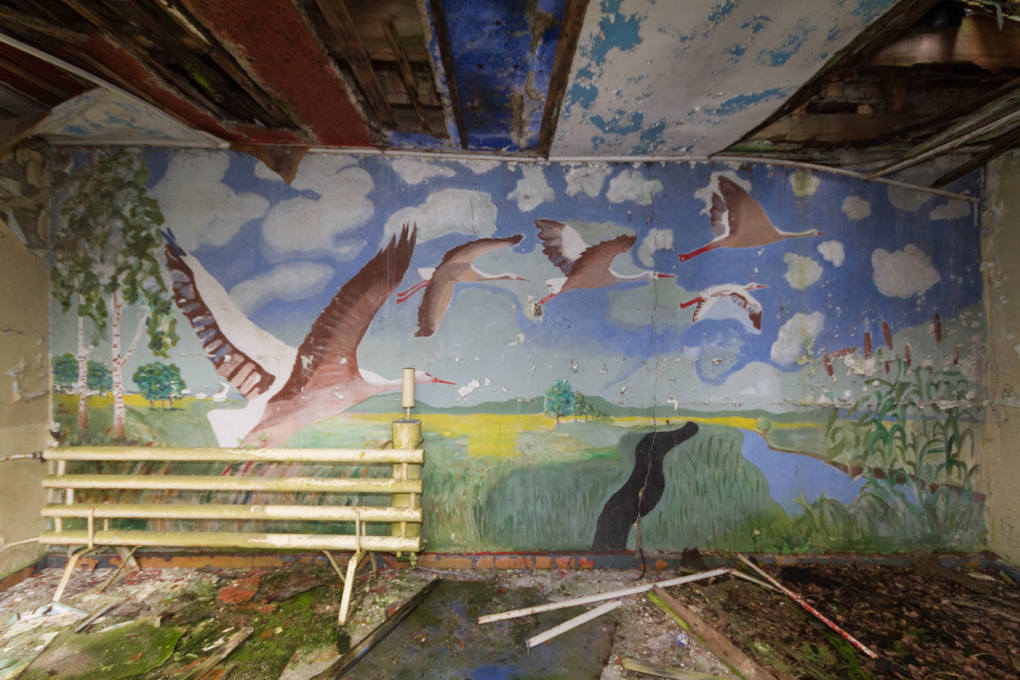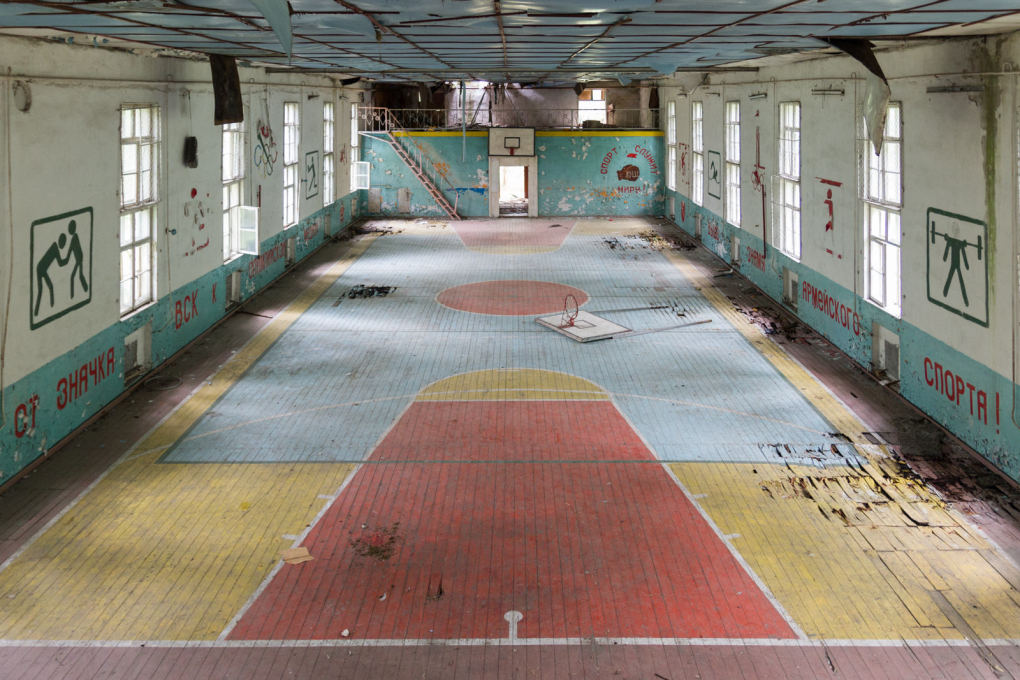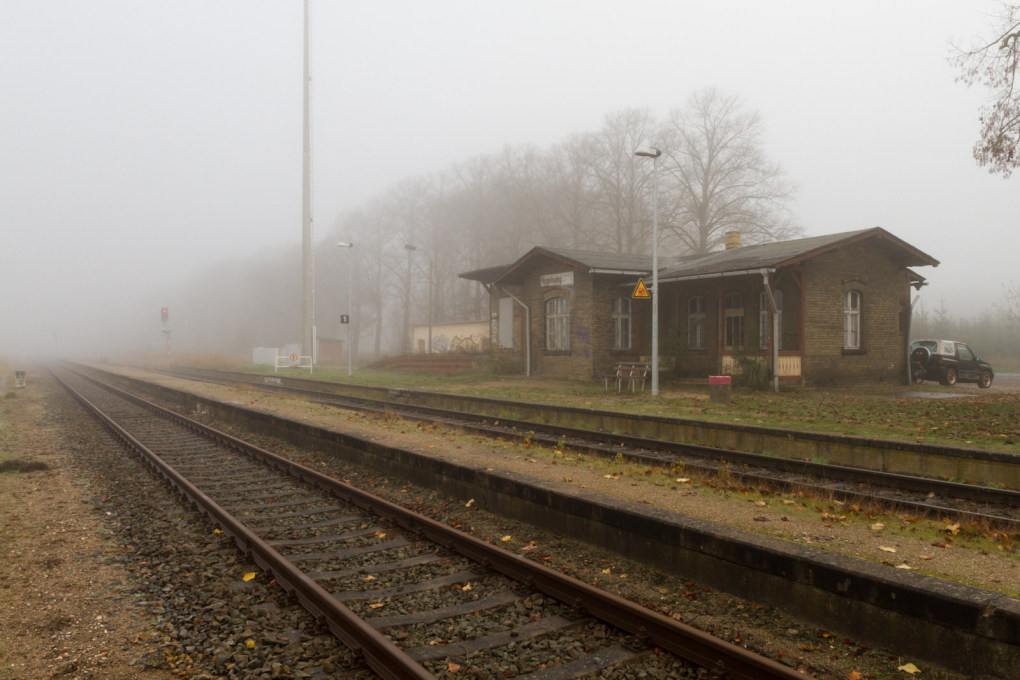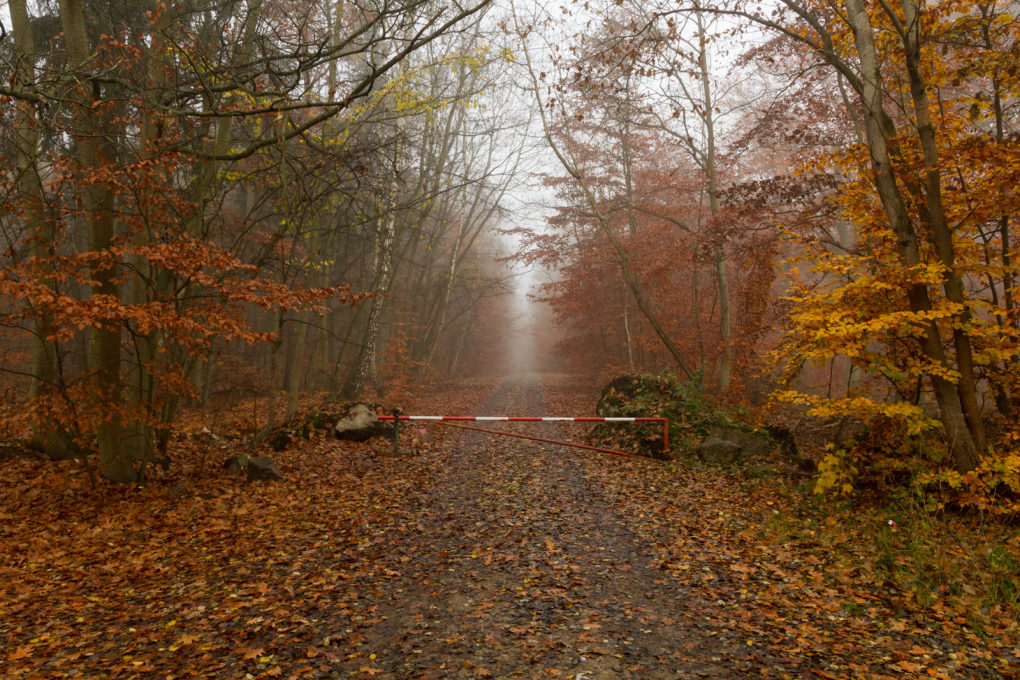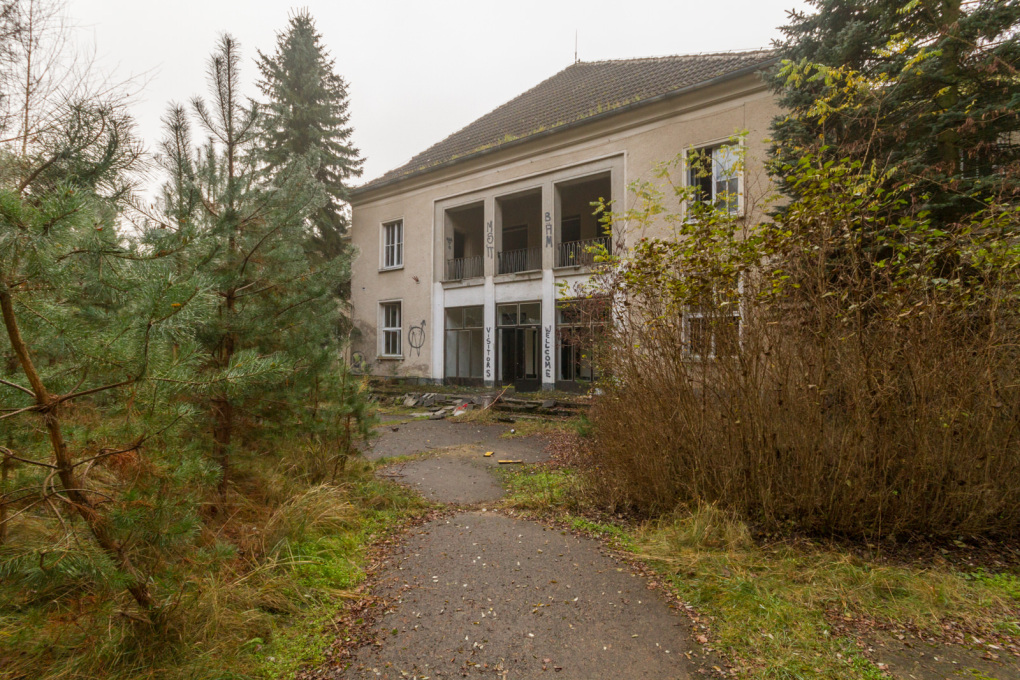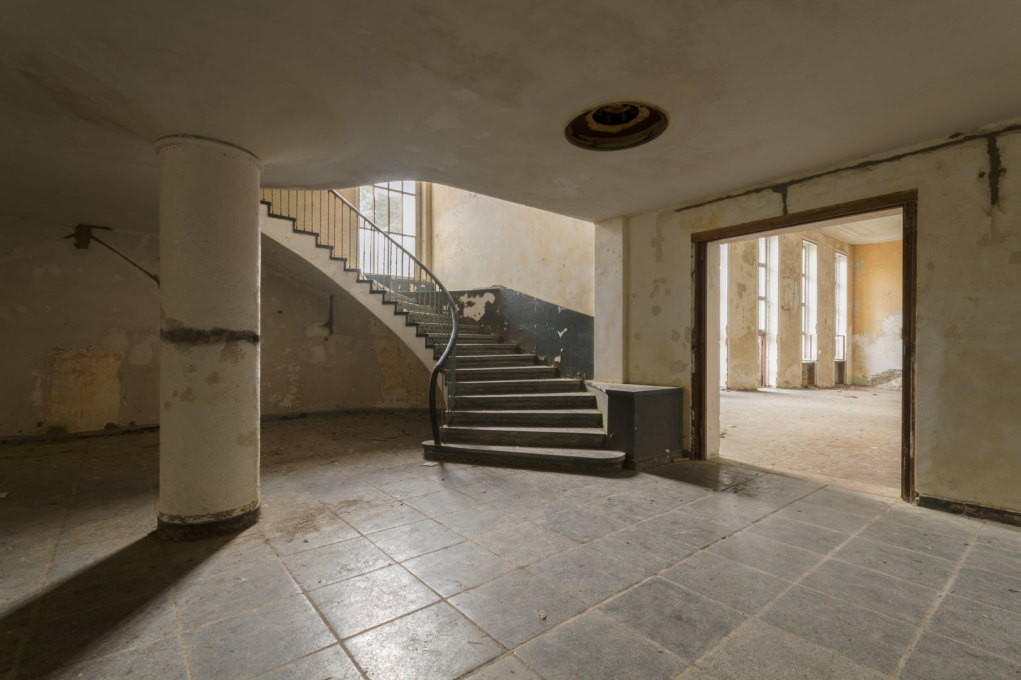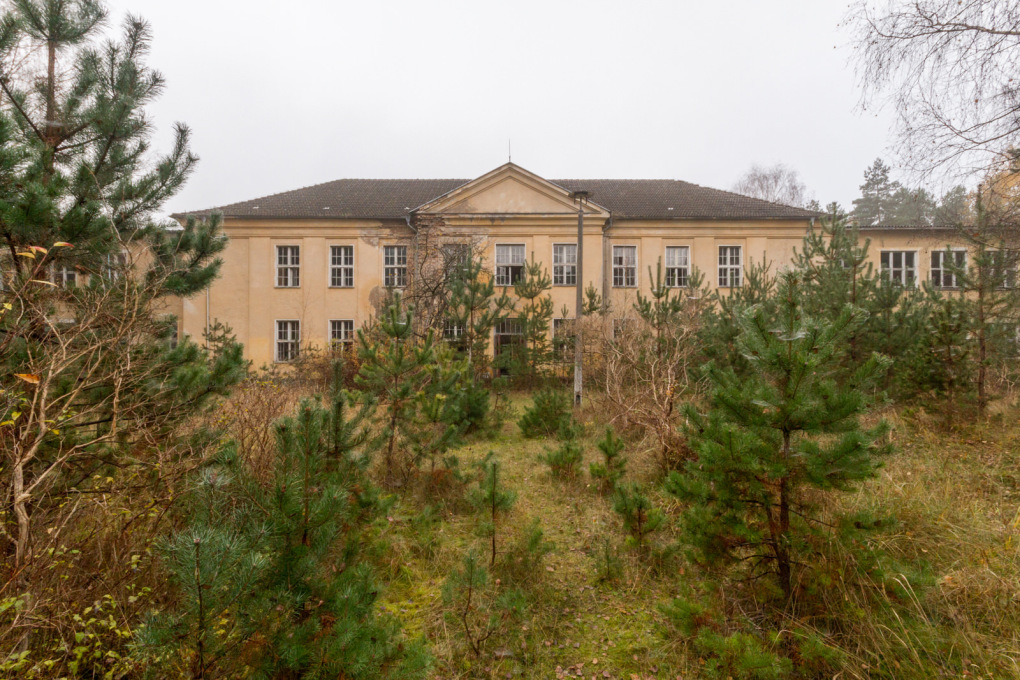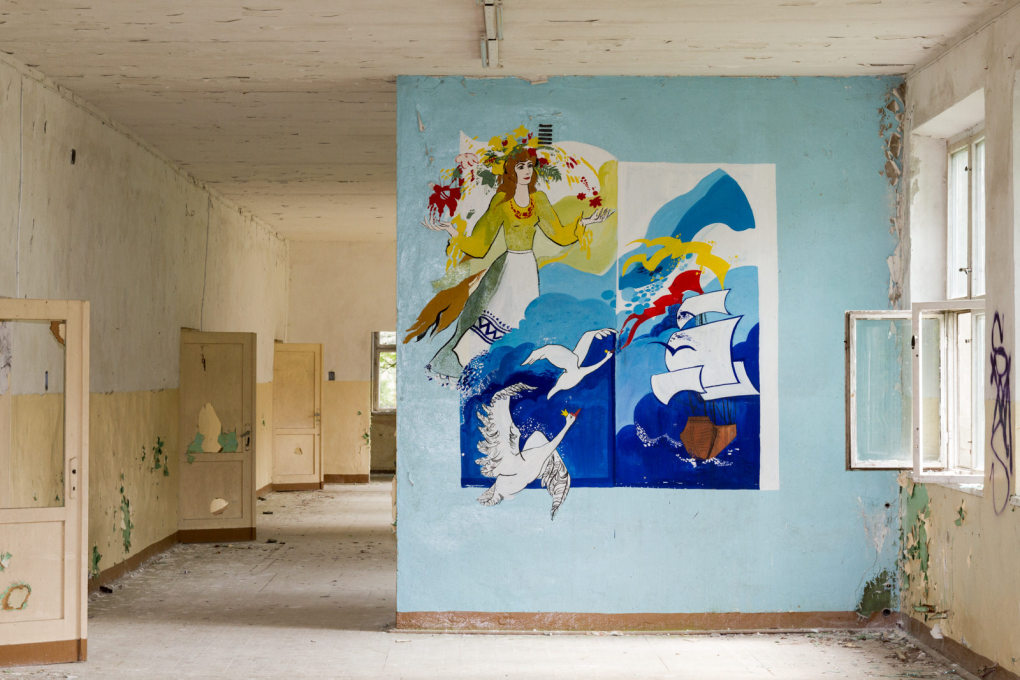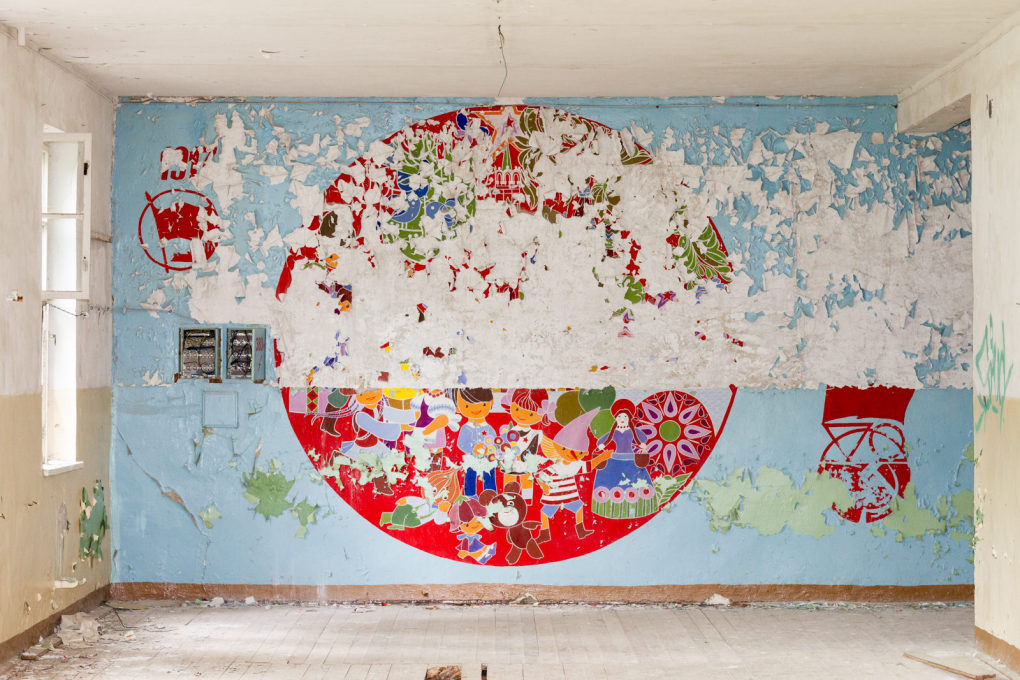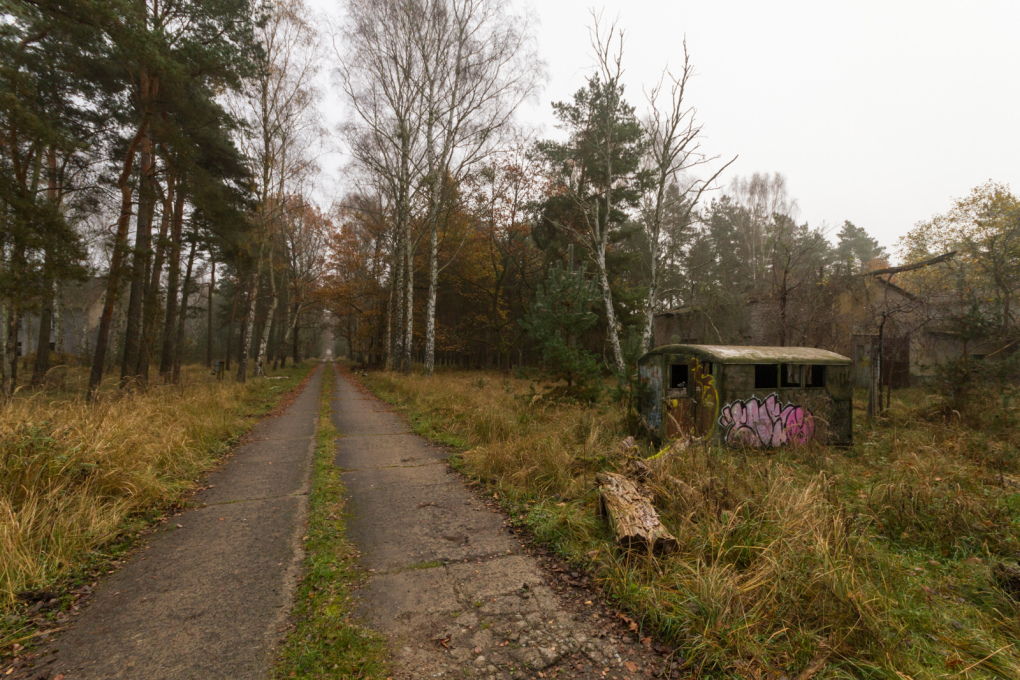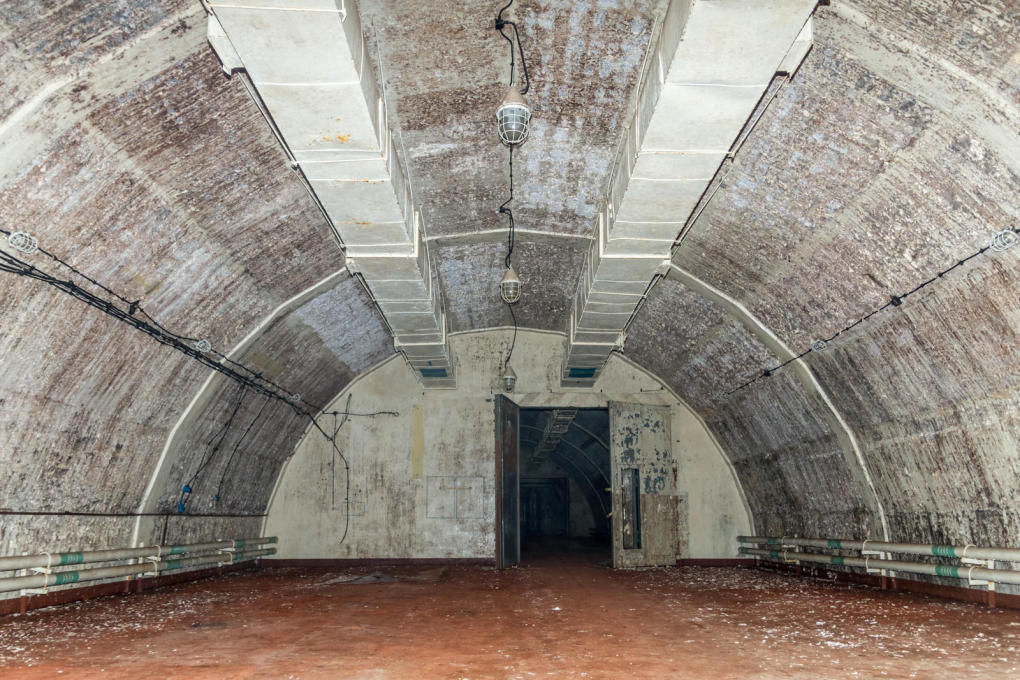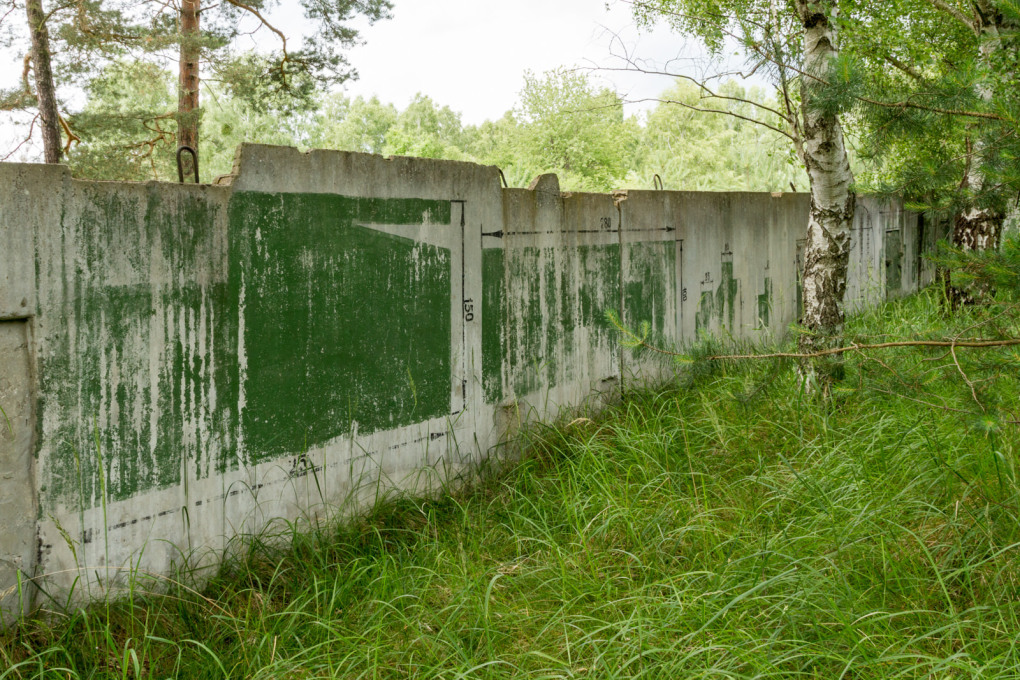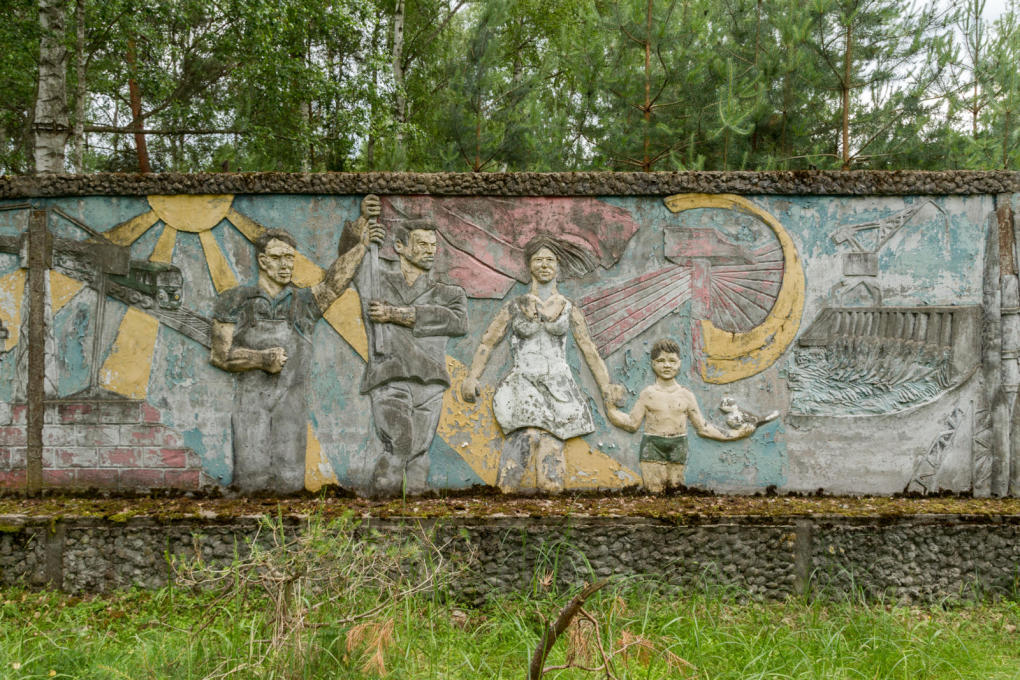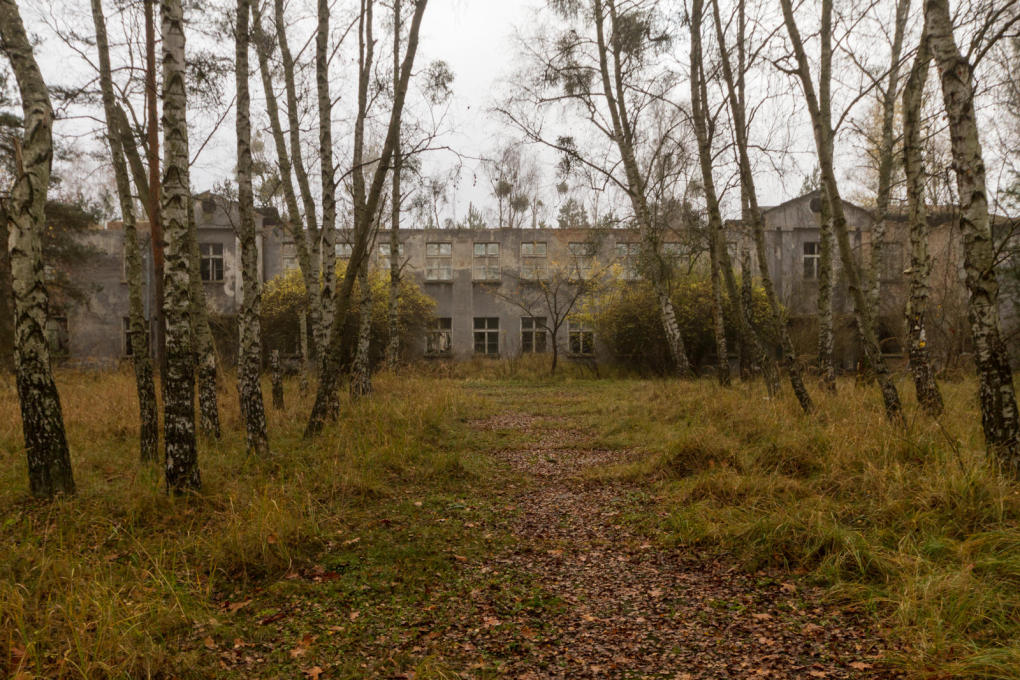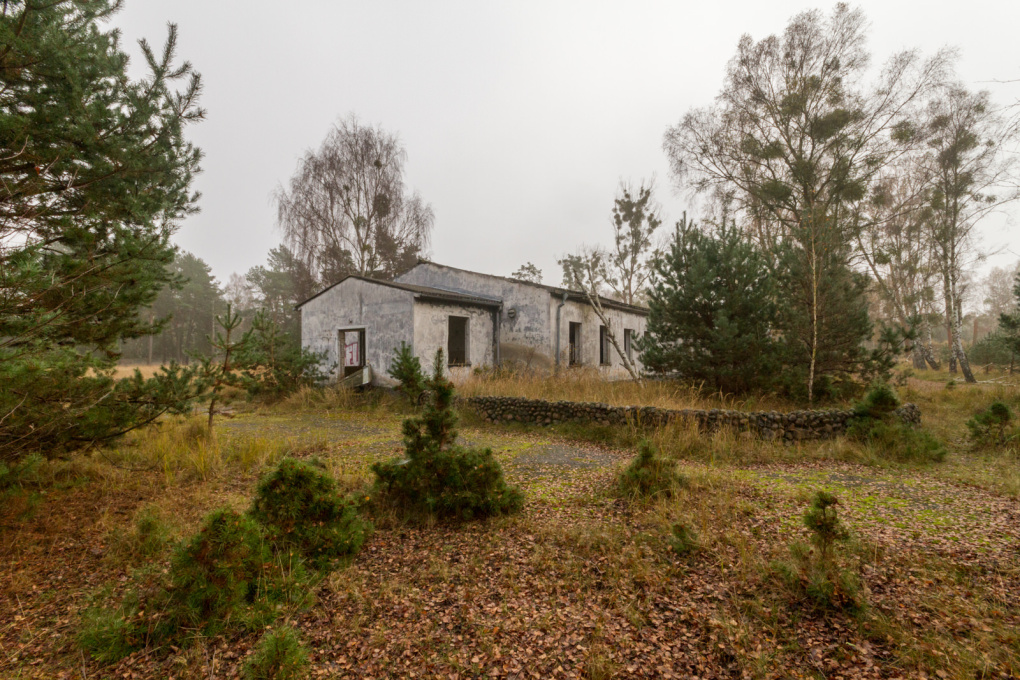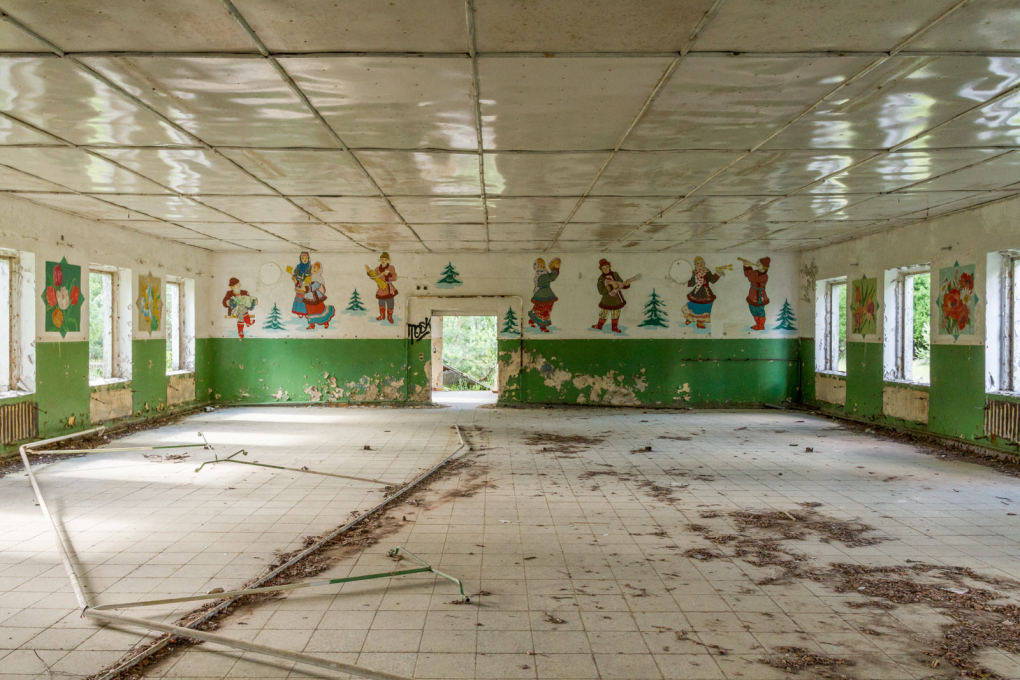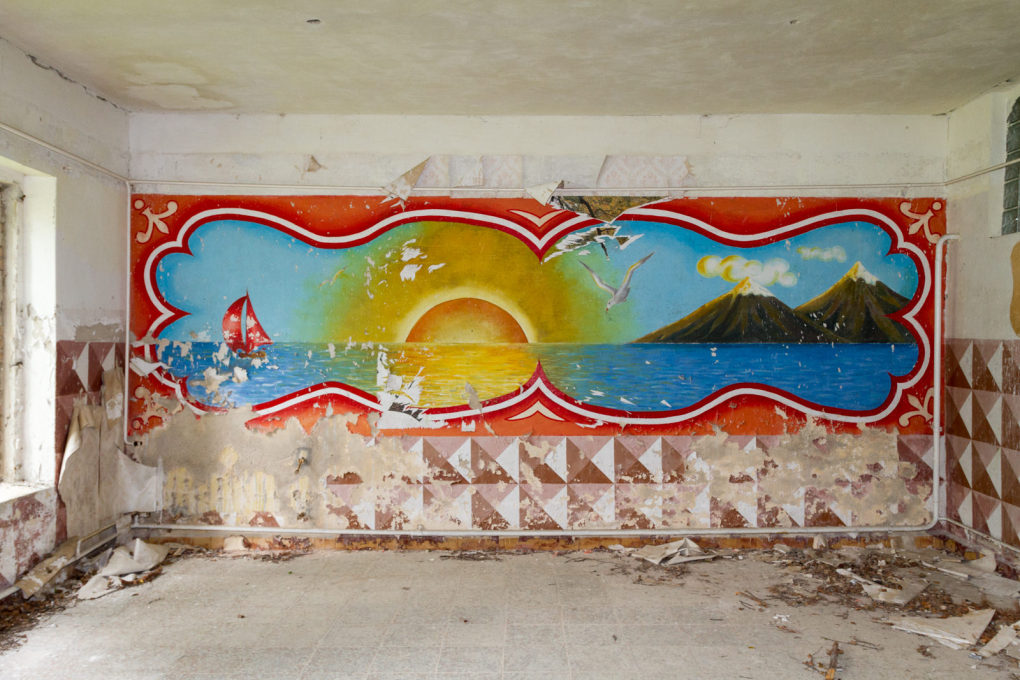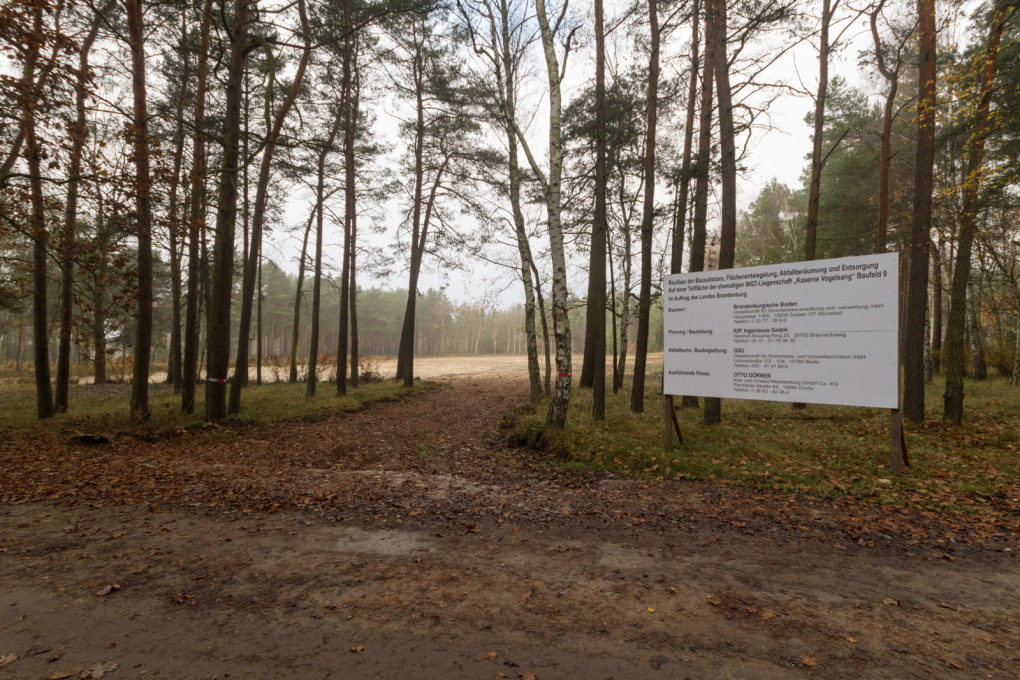Twenty-five years after the fall of the Berlin Wall, and twenty years after the withdrawal of Russian troops, architectural remnants of a dissonant German past continue to haunt the nation’s peripheral landscape. Benjamin Busch investigates for uncube.
During the 49-year history of the German Democratic Republic (GDR), which formed part of the Soviet Bloc, at least ten million Russian soldiers and their dependents lived within the nation’s borders. Across the former GDR, continuous Soviet military presence required the construction of new facilities to support both the military and civilian functions of their occupation. Many woodlands, which today have become nature conservation areas, remained restricted military areas until 1994. The garrison in Vogelsang, a disappearing ghost town hidden in the forest about 65 kilometres north of Berlin-Mitte, is one such area. Since its abandonment two decades ago the former military buildings there have stubbornly endured both natural and artificial processes of erasure.
The garrison’s location in the village of Vogelsang strategically afforded Soviet forces the ability to respond quickly to uprisings in East Berlin, the capital of the GDR. Initiated in 1952, it was conceived as a self-contained settlement for up to 15,000 Russian soldiers and civilians. In addition to barracks, garages and bunkers, it housed all the necessary infrastructure for modern social life: a theatre, shops, offices, a gym, a school, and medical facilities. Notably, the military base was equipped with nuclear missiles from early 1959 to 1960 and later between 1983 and 1988. After the withdrawal of Russian troops, the military town was partially demolished, and the rest was left to rot in the woods of Brandenburg. Since 2004, through a series of contracts between local authorities and private businesses, the buildings are being torn down in order to “renaturalise” the site – to return it to nature.
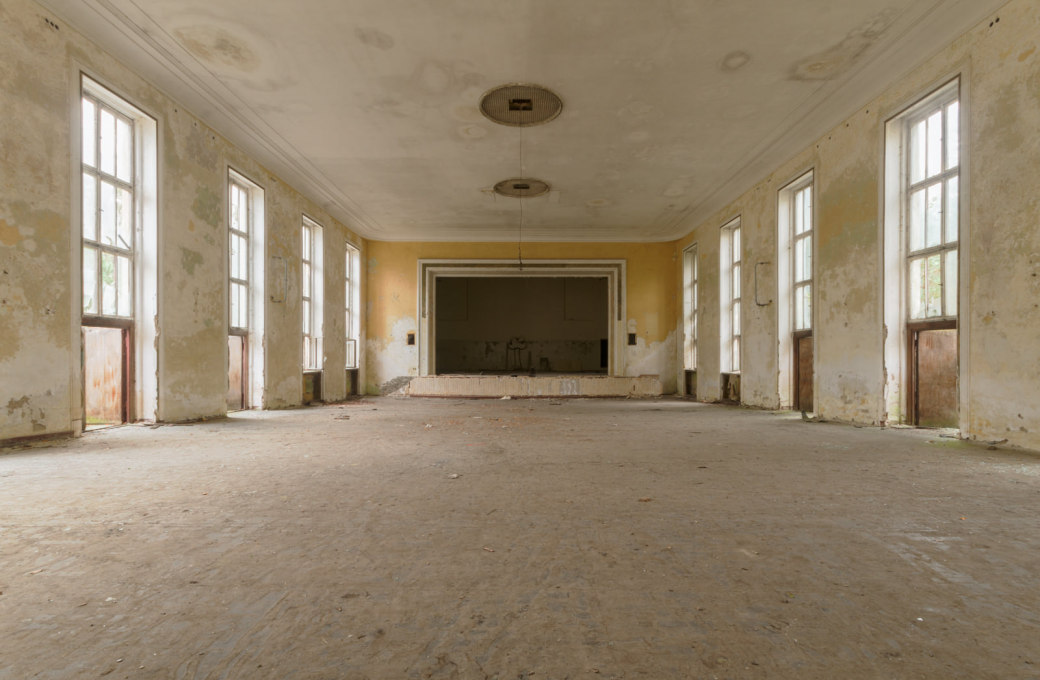
Interest in Vogelsang has grown in recent years due, paradoxically, to its accelerating deterioration, perhaps out of a curiosity that is not satisfied by the written volumes of history. For instance, through a series of interviews with former soldiers, their wives and children and current German residents of the village, Stefanie Trambow and Maxim Stepanov’s 2013 film Lenin in Vogelsang brings attention to the quotidian interactions between Russians and Germans in the GDR and their disintegration after East Germany’s dissolution. A modestly produced exhibition was recently conceived by Mario Hoffmann of Heimatgalerie, which provides extensive factual information on poster boards in an inconspicuous hallway of the district administration building of Oranienburg, encouraging reflection and critical consideration. Both of these works go beyond ruin tourism and Ostalgie by questioning the essential meaning of the site in today’s context, respectively documenting both emotional and material qualities of the site.
Yet the fractured garrison itself persists as a medium of its own history, however transient in nature the site has become. The remaining buildings at Vogelsang have long been emptied of their contents, and the open spaces once surrounding them, formerly occupied by restricted personnel, are now taken over by burgeoning undergrowth. Roofs have caved in, demolished buildings lie in rubble, and vacuous atomic bunkers idly protect little more than stale air. The sounds of woodpeckers and rustling leaves mingle with the distant mechanical groans of demolition vehicles. Even considering these circumstances, astonishingly a number of artworks have survived in Vogelsang. Scattered throughout the garrison are murals ranging in origin from the first years the garrison’s construction to its final years of operation. Some murals are positioned en plein air, ranging from socialist propaganda to military training instructions; others cling to the peeling walls of rooms left completely exposed to the elements.
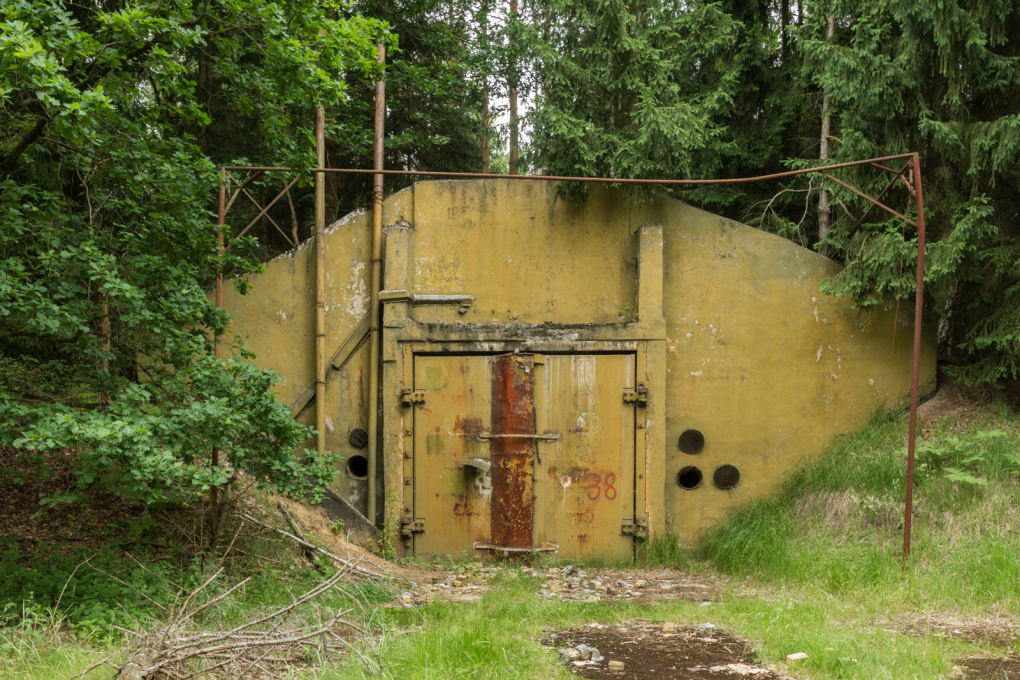
The history of Vogelsang will not vanish with its buildings; it is a powerful site even decades after its abandonment. The garrison represents a rift in time as much as a rift in political ideology. Coupled with the memory of Cold War Berlin, the world stage for capitalist-communist tensions, Vogelsang continues to act as an uncomfortable reminder of the possibility of totalitarianism. At the same time, it physically encapsulates the memories of the people who once called it their home – those who served there, raised their families there, or grew up there – regardless of their political inclinations. Visiting the garrison conjures new considerations about the ephemeral qualities of daily life through critical engagement with its pure material existence, but this potential will only remain until it is levelled.
As Vogelsang dissolves into the landscape, its history sublimates into new media representations, including the recent film and exhibition about it, whereby the garrison gains access to the future. While its destruction removes the possibility of firsthand experience by visitors, demolition of its buildings and renaturalisation of its grounds are inevitable. The sheer number of abandoned military settlements remaining in Germany makes their immanence impossible to ignore, and sites as decrepit as Vogelsang only gain exchange value with their erasure: by returning this site to nature, the development of already-existing natural reserves in other parts of Germany is made possible. Before past sites of political confrontation disappear with lack of popular interest, the possibility yet remains to record them. Through forms of documentation that portray such sites in all their complexity, the architecture of violence escapes its own destruction; its memory refuses to be repressed.
- Benjamin Busch is an architectural designer and photographer living in Berlin. Utilising photography as an analytical method, he investigates complex fields of relations within the built environment.
www.heimatgalerie.de




